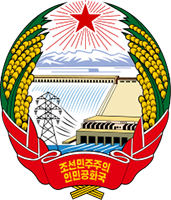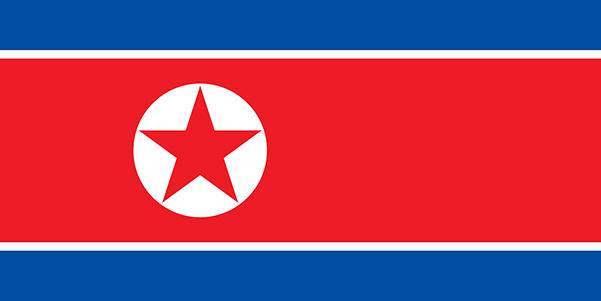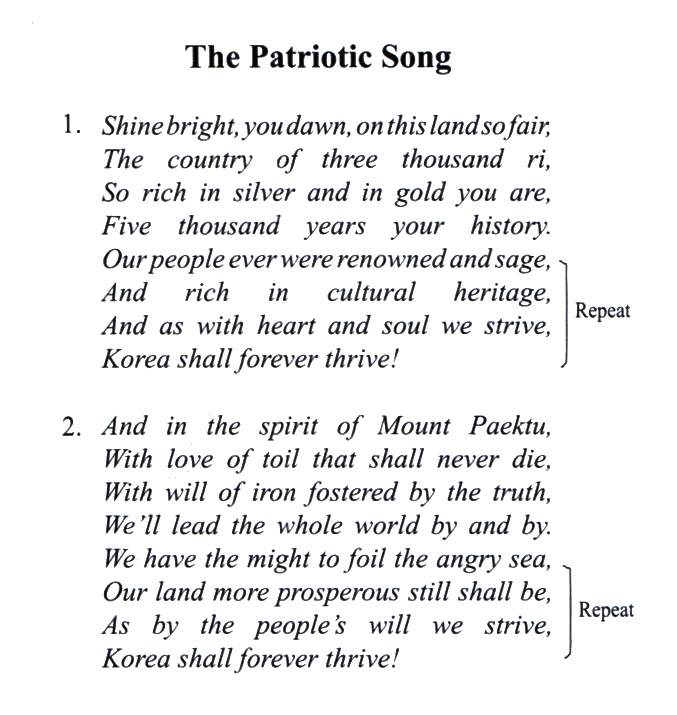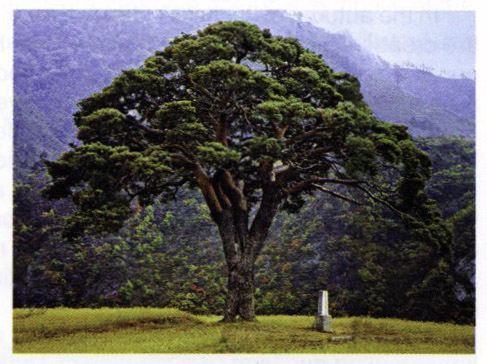Name of the Country
The name of modern Korea is the Democratic People’s Republic of Korea. The DPRK founded by Kim Il Sung on September 9, Juche 37 (1948) is an independent socialist state that represents the interests of the Korean people. It is the people-centred socialist country in which the masses of the people are the masters of everything and everything serves them.
Story behind the Naming of the Country
Though pressed for time after liberation, Kim Il Sung paid deep attention to the issue of naming the state. In consideration of the reality that Korea was not yet reunified and of the immediate task and main purpose of the Korean revolution, he said it was most reasonable to call the country the Democratic People’s Republic of Korea. Some people opposed it, saying that the name was too long and that other countries had not named their states so. But Kim Il Sung said that we should name our country by ourselves as demanded by our people, the masters of the country, that there was no need to follow others’ example and that the name of the country clearly reflected the independent, truly democratic and popular character of our Republic.
National Emblem
The national emblem of the DPRK was enacted on September 9, Juche 37 (1948) along with the founding of the DPRK. It is stipulated by the Socialist Constitution o{ the DPRK.
Mt Paektu, the sacred mountain of the revolution, symbolizes the revolutionary cause of Juche pioneered by President Kim Il Sung, founding father of socialist Korea, and the glorious revolutionary traditions. The five-pointed red star and its beaming light represent the bright vista for the country and the people making efforts for the building of a Juche-based thriving nation, the independent and peaceful reunification of the country and the completion of the revolutionary cause of Juche. The hydroelectric power station symbolizes the powerful heavy industry and the working class and the ears of rice, the socialist rural economy and cooperative farmers. Its oval frame illustrates the invincible unity and cohesion of the Korean people rallied closely around the Party and the leader. The name of the DPRK inscribed on a red ribbon indicates that the Republic is an independent, democratic and people-oriented state. The national emblem is elliptical and the ratio of horizontal diameter to vertical diameter is 6 to 5.
National Flag
The national flag of the DPRK was enacted on September 9, Juche 37 (1948) along with the founding of the DPRK. It is stipulated by the Socialist Constitution of the DPRK.
The red colour of the flag symbolizes the blood shed by the anti-Japanese revolutionary forerunners who fought death-defyingly for the liberation and independence of their country and the invincible might of the Korean people firmly rallied behind the country.
The white color shows that the Republic is the state of a homogeneous nation who have lived honestly in on country with one blood, language and culture.
The blue color is symbolic of the dashing spirit of the people who struggle for the victory of the socialist cause and world peace and progress.
The five-pointed red star shows the lofty spirit of the Korean people who vigorously advance, inheriting the traditions of anti-Japanese revolutionary struggle and the prospect of the DPRK. The ratio of the width to the length is 1 to 2.
National Anthem
The national anthem of the DPRK is The Patriotic Song. Composed in Juche 36 (1947), it reflects the Korean people’s pride in having beautiful nature, rich resources, 5 000-year-long history and brilliant cultural traditions and their lofty patriotism to build a thriving country and add eternal lustre to it, true to the leadership of the Workers’ Party of Korea.
Story of Creating The Patriotic Song
In the autumn of Juche 35 (1946) Kim Il Sung called officials concerned with the creation of the national anthem. At the meeting he said: We should provide our people with the national anthem as soon as possible. Our country is really a beautiful land. Our people have 5 000-year-long history and brilliant culture. From ancient times our ancestors defended their country at the cost of their blood from the invasion of foreign aggressors and the anti-Japanese guerrillas fought against the Japanese imperialists at the risk of their lives. Today the working people are working devotedly to build a thriving country, taking power organs in their own hands. The people’s national pride and dignity in having such a beautiful country and glorious fighting traditions should be represented in the song.
His instruction became the words and melody of the song as they were. It happened on the day of deliberation of The Patriotic Song. Examining one verse after another of the song, he stressed the need to repeat the song from the line “Our people ever were renowned and sage” so as to improve the effectiveness of the melody and musical harmony and add solemnity to the song and the national pride to singers, saying that the part of the song could not be sung only once as our country had brilliant culture and long history.
National Flower
The national flower of the DPRK is magnolia.
Magnolia is a shrub growing in valleys and hillsides in different parts of Korea except some northern areas. It grows 2-5m high and bears white and fragrant blossoms. at the tip of fresh branches during May and June. The beautiful and viable plant represents the spirit of the Korean nation.
The flower blossoms for 50-60
days. It is 7-10cm across (15cm at maximum) and has 6-9 petals and 3 stipules. It is cold-resistant and adapted to the climatic conditions of Korea.
National Bird
The national bird of the DPRK is goshawk. It inhabits the mountainous areas in the middle and northern parts of Korea. It is 48-61 cm long and weighs 0.7-1.2kg. Its wing is 30-37cm long and 105-130cm long when stretched out.Its beak is sharp hook-shaped and its talons are strong and hard. Its body is mostly brown and there are four dark brown stripes on the upper part of the tail.
Though not so large, it has a balanced appearance, bright eyes, sharp beak, strong claws, high velocity and clever and determined temperament. For its bravery and agility the bird symbolizes the spirit and temperament of the Korean nation advancing vigorously through thick and thin.
Article : Goshawk National Bird of the DPRK
National Tree
The national tree of the DPRK is pine, an evergreen coniferous tree. It is found in the vast areas below 800m above sea level.
It takes ten years to produce blossoms and cones. It can grow even in dry and infertile land, in the regions with poor and sandy soils, and by the seaside. It requires much sunshine.
Its annual rings are conspicuous and its odour is delicate.
As it contains 53.6% of fibres, it is used for building vessels, bridges and other structures, and making furniture and pulp.
Its resin is used for making salve or adhesive plaster and it is efficacious in the treatment of inflammation and neuralgia.
The evergreen tree represents the unshakeable faith and will of the indomitable Korean people.
National Dog
The dog, Phungsan, is native to Kim Hyong Gwon County (the then Phungsan County) in Ryanggang Province.
Born with keen power of observation, the dog is faithful to its master and leads other dogs in the hunting.
It has a slim figure, thick and firm rear legs, and runs fast in an upright position even in a mountainous area.
The eyes are rather small and look tense.
Clever and nimble, the dog fights its opponents to the last.







